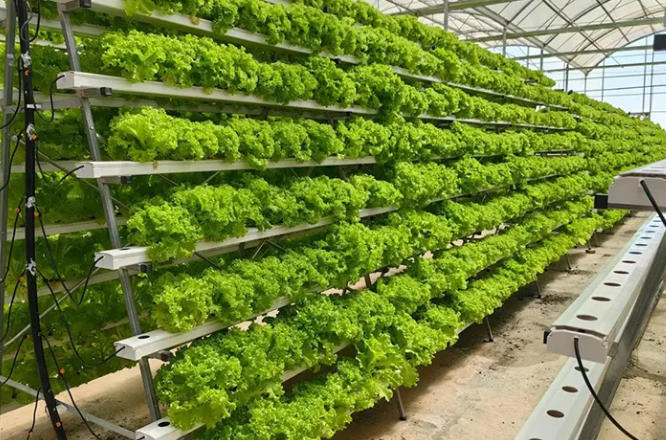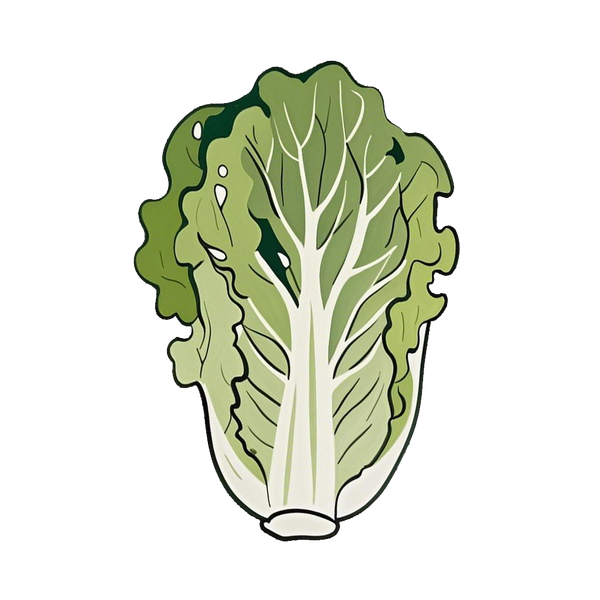
Complete Guide to Hydroponic Vegetable Cultivation: From Core Principles to Practical Solutions
Successful hydroponic growing hinges on precise management of three core elements: nutrient solutions, growth environment, and equipment systems, combined with scientific crop selection, seedling techniques, and pest control. This guide integrates key hydroponic practices into a systematic management framework covering the entire process from setup to harvest, helping growers efficiently troubleshoot issues and improve success rates.
I. Nutrient Solution Management: The "Lifeblood" of Hydroponics
The nutrient solution is the core of soilless cultivation. Its concentration (EC value), acidity (pH value), and oxygen content directly determine root health and nutrient uptake efficiency. This is the most error-prone aspect and requires dynamic monitoring and adjustment.
1. Concentration Imbalance: Avoiding "Nutrient Burn" and "Deficiency"
Symptoms:
-
Too high (EC excess): Leaf tip burn, wilting, brown roots ("nutrient burn"), often caused by overfeeding.
-
Too low (EC deficiency): Weak growth, yellowing older leaves ("starvation"), often due to infrequent solution changes or water evaporation diluting nutrients.
Solutions:
-
Accurate monitoring: Use an EC meter. Leafy greens (e.g., lettuce, spinach) thrive at 1.2–2.0 mS/cm; fruit crops (e.g., tomatoes, cucumbers) at 2.0–3.0 mS/cm.
-
Dynamic adjustment: Use half-strength solution for seedlings, full strength during vigorous growth, and reduce by 1/3 one week before harvest for better flavor.
-
Gradual correction: For EC issues, replace 1/3–1/2 of the solution instead of a full change to avoid root shock. Recheck after 24 hours.
2. pH Imbalance: Ensuring Nutrient Availability
Symptoms:
-
pH too high (>6.5): Iron, calcium, and magnesium become insoluble, causing yellow new leaves (iron deficiency). Common in hard water areas.
-
pH too low (<5.5): Root damage, browning, reduced nutrient uptake (acid toxicity). Often caused by organic acid buildup.
Solutions:
-
Regular testing: Use a pH pen or test strips weekly. Most hydroponic crops prefer pH 5.5–6.5.
-
Gentle adjustment:
-
For high pH: Add citric acid or phosphoric acid (1–2 drops per liter, stir and retest).
-
For low pH: Add potassium bicarbonate or potassium hydroxide solution (incremental changes).
-
-
Water quality: Use filtered or reverse osmosis water to minimize mineral interference.

3. Oxygen Deficiency: Preventing Root Rot
Symptoms: Brown, slimy roots with a foul odor; plant wilting (oxygen deprivation). Common in high temperatures (>28°C) or with airstone failures.
Solutions:
-
Continuous aeration: Use an air pump with airstones running 24/7. Place airstones evenly for full oxygenation.
-
Regular solution changes:
-
Summer: Change every 5–7 days; winter: every 10–15 days.
-
Retain 1/3 of the old solution to maintain beneficial microbes.
-
Match the temperature of new solution to within 3°C of the old to avoid root shock.
-
-
System-specific tips:
-
Deep Water Culture (DWC): Add baffles to improve flow.
-
Nutrient Film Technique (NFT): Ensure consistent flow rate to avoid stagnant roots.
-
II. Environmental Control: Replicating the "Ideal Climate"
Hydroponic crops (especially indoors) rely on artificial environments. Temperature, light, and humidity must be carefully controlled.
1. Lighting: Preventing "Legginess" and "Burn"
Symptoms:
-
Insufficient light (<8 hours/day): Leggy growth, weak stems, low yield.
-
Excessive light: Leaf scorch, wilting.
Solutions:
-
Artificial lighting: Use full-spectrum or red-blue (6:1) LED grow lights 10–12 hours daily. Maintain 20–30 cm distance from plants.
-
Natural light management: Use 50% shade cloth in summer; extend exposure in winter.
-
Correct legginess: Increase light intensity and reduce nutrient concentration temporarily.
2. Humidity: Balancing Disease Prevention and Plant Needs
Symptoms:
-
High humidity (>80%): Fungal diseases (e.g., powdery mildew).
-
Low humidity (<40%): Leaf tip burn, rough texture.
Solutions:
-
Reduce humidity: Improve ventilation; increase plant spacing; remove affected leaves.
-
Increase humidity: Use humidifiers (set to 50–60%); avoid wetting leaves directly.

III. Equipment and Root Maintenance: Ensuring System Reliability
Equipment failures or root issues can cause crop loss. Regular checks are essential.
1. Equipment Failures: Preventing "Dry Runs" and "Clogs"
Common issues:
-
Pump failure: Causes wilting (check for debris or power issues).
-
Air pump failure: Leads to root suffocation (clean or replace filters monthly).
-
Clogged lines: Often due to algae or root overgrowth.
Solutions:
-
Daily checks: Listen for unusual noises; ensure even flow.
-
Monthly cleaning: Use soft brushes to avoid scratching surfaces.
-
Backup plan: Keep spare pumps; for power outages, mist roots manually within 24 hours.
2. Root Health: "White Roots Thrive, Brown Roots Struggle, Black Roots Die"
Healthy roots: White/cream-colored, firm, odor-free.
Solutions:
-
Weekly inspections: Trim brown roots with sterilized scissors.
-
For root rot: Remove plant; soak roots in fungicide (e.g., carbendazim 1:500) for 10 minutes; replant in fresh solution.

IV. Crop Selection and Seed Starting: "Start Right, Succeed Faster"
Not all crops suit hydroponics. Choose wisely and master seedling techniques.
1. Crop Selection
Beginner-friendly:
-
Leafy greens: Lettuce, spinach, pak choi (20–40 days).
-
Sprouts: Pea, radish sprouts (no complex equipment needed).
-
Advanced: Cherry tomatoes, cucumbers (require support and precise control).
Avoid: Root crops (e.g., carrots), heavy feeders (e.g., corn).
2. Seed Starting Tips
Common issues: Damping-off (too wet), legginess (low light), weak roots.
Solutions:
-
Use sterile media: Rockwool or sponges (pre-soaked).
-
Sow seeds at depth = 2× seed size; keep moist but not waterlogged.
-
Provide 20–25°C and 8–10 hours of light until 2–3 true leaves appear.
V. Summary: Essential Tools and Core Principles
1. Must-Have Tools
-
Monitoring: EC/pH meters, thermometer.
-
Equipment: LED lights, timer, air pump, water heater.
-
Supplies: Measuring cup, soft brush, sterilized scissors.
2. Core Principles
-
Daily checks: Observe plants, roots, equipment.
-
Start simple: Begin with leafy greens; advance to fruiting crops.
-
Safety first: Use food-grade nutrients; avoid contaminating solution.
By following this guide, growers can effectively troubleshoot issues and achieve high yields—whether for home gardens or commercial setups—unlocking the full potential of soilless cultivation.
Ready to Start Your Hydroponic Journey?
Whether you’re a beginner looking for your first compact system or an advanced grower seeking smart automation, VVCULTIVATE offers science-backed hydroponic solutions tailored to your needs. From nutrient-balanced kits to eco-friendly designs, we help you grow fresher, faster, and smarter—right at home.
Explore our products and unlock your potential as a modern grower:
👉 Visit vvcultivate.com to Shop Now
Join thousands of urban farmers who trust VVCULTIVATE for sustainable, high-yield growing. Free guides, expert support, and subscription-based nutrient deliveries available!
